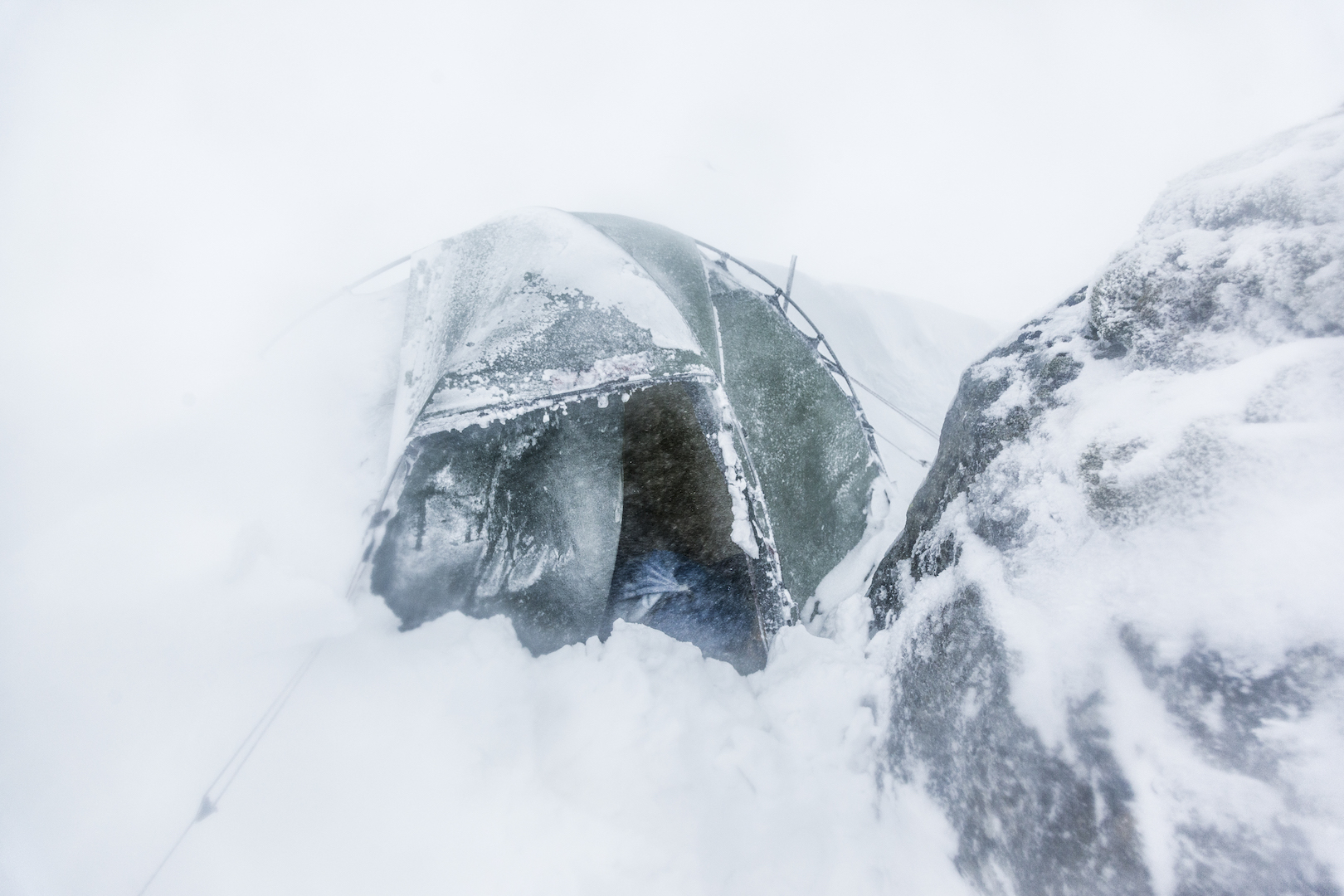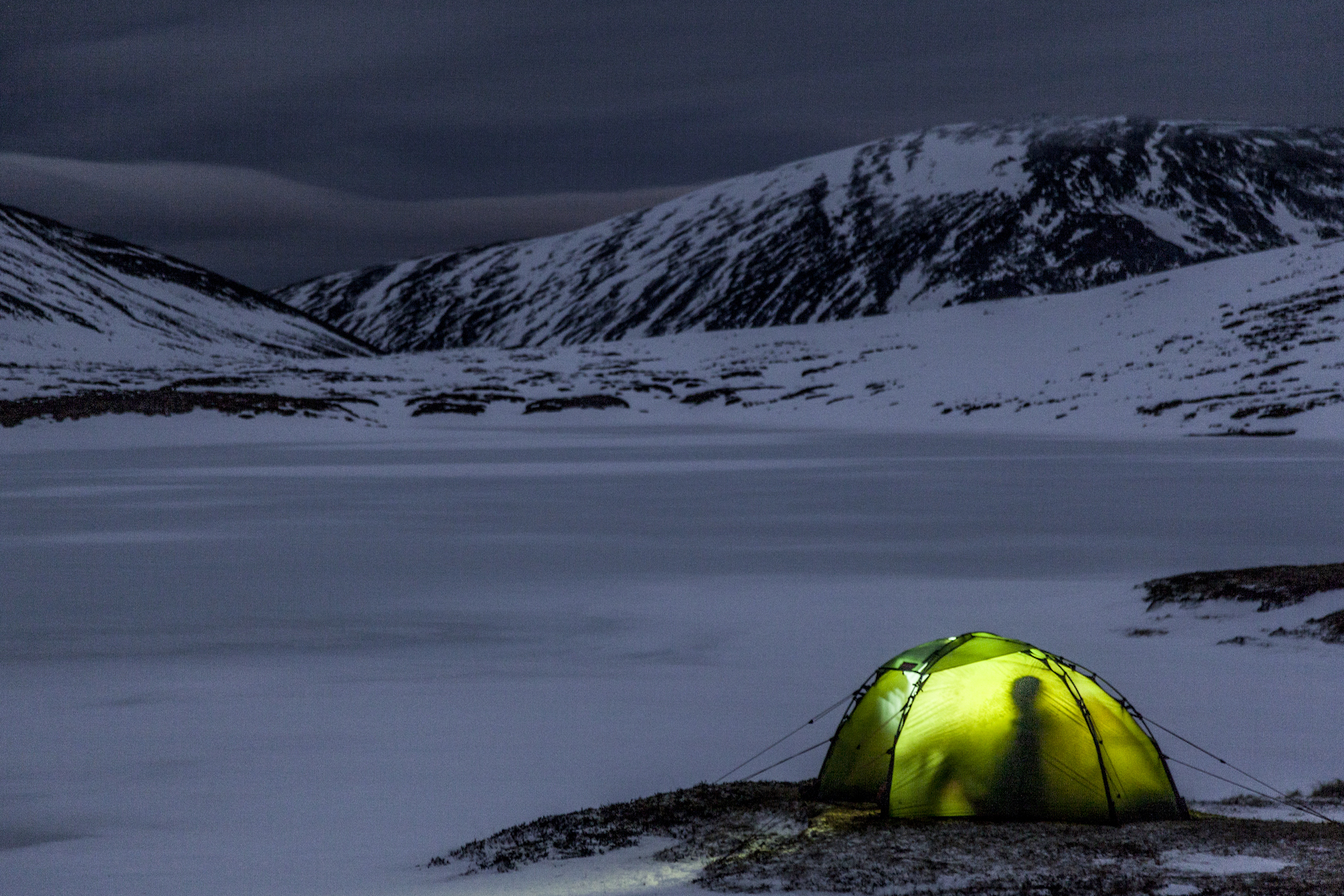Over a year-long expedition to kayak around Scotland and tackle a mostly winter round of the Munros, I spent a vast majority of my nights in a tent. Climbing +3000ft peaks non-stop across one of the windiest winters in Scotland’s recent records, I learned first-hand the challenges and rewards of winter camping. There are of course many ways to camp in winter, and I can offer only those lessons I have personally discovered, the options and variances are infinite to the individual.
The greatest importance of winter camping boils down to that immortalised quote: ‘There’s no such thing as bad weather, only poor gear’ and so long as the six ‘P’s of preparation are respected then winter camping can be both rewarding and comfortable, those P’s being ‘Proper prior planning prevents poor performance’. Three key elements to this are planning, equipment and discipline.
Winter Camping: Planning
Tailor your trip to your experience. Do not go into the mountains planning to winter camp having never camped in summer, build up to it, be it by season or by sheltered valley progressing to a summit. Pay serious attention to both weather and avalanche risk and be conservative, if you can avoid camping on an exposed plateau in a gale then do so. Master navigation and other hill skills to safely get in and out. Go equipped, go prepared and tell someone.
Winter Camping: Tents
Pick your tent to outlast the maximum conditions you expect it will face, and perhaps raise those expectations a little higher. If you plan to camp in sheltered areas such as forested valleys then a three season tent will probably survive in winter, but I would highly recommend investing in a four season shelter with double walls, sturdy poles and plenty of guy lines.
“Sleep naked or clothed? I’ve had some heated (pun intended) discussions over campfires on this one – it seems to be a common argument.”
For my winter round, I used a Hilleberg Soulo with the ‘heavyweight’ 10mm winter poles. Pitched correctly it survived winds in excess of 100mph, snow burial under several metres, and to date over 500 nights of use and abuse, and it is still going! Rigidity, strength and quality are three things to look for.










